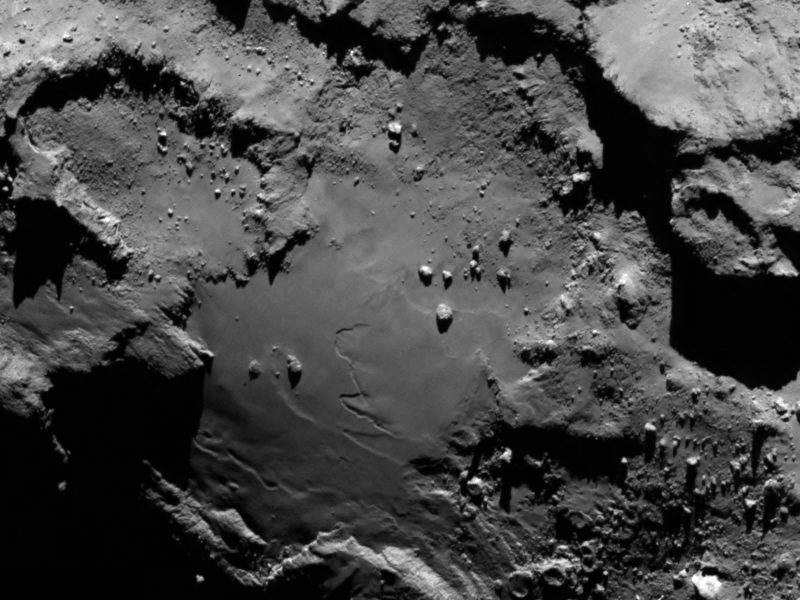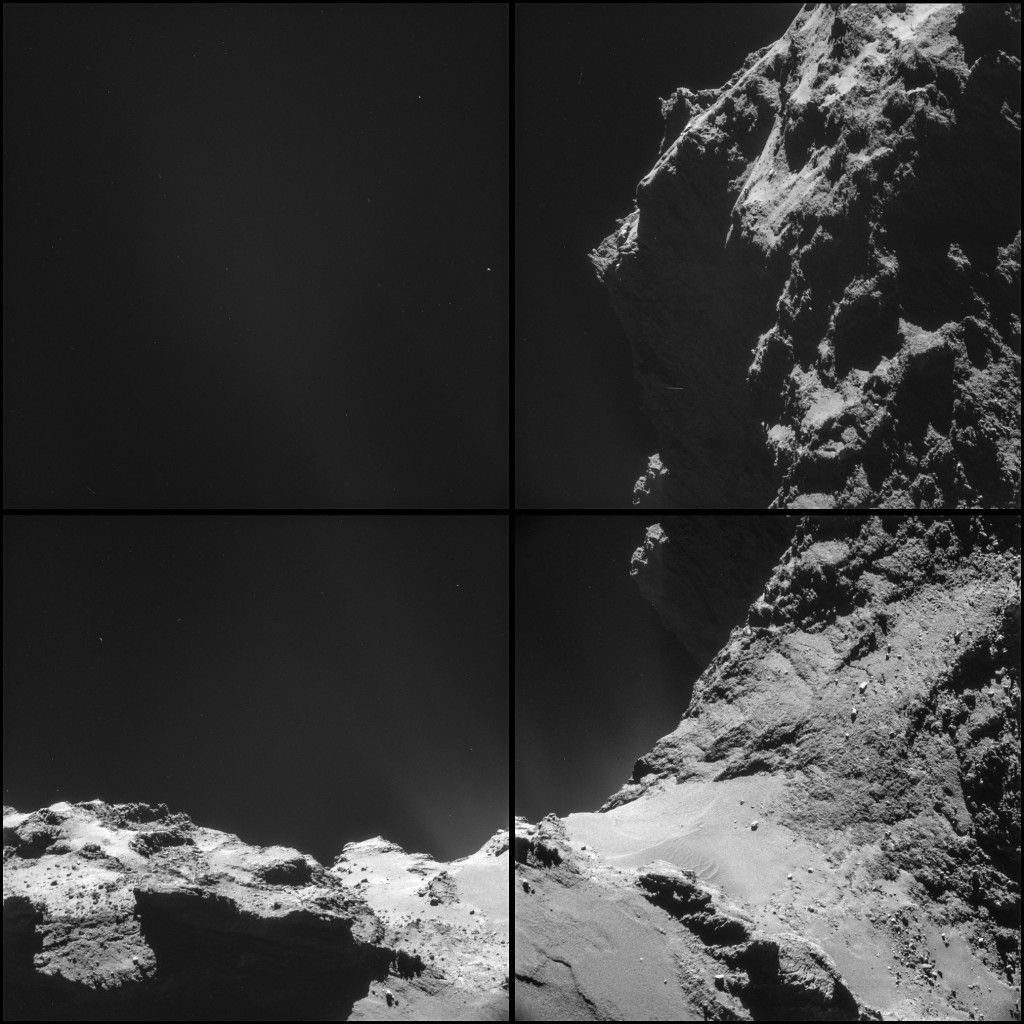The European Space Agency’s Philae lander successfully landed on a comet and is sending signals backs after an early mishap, scientists said at a news conference in Germany Thursday.
The lander, dropped from the Rosetta spacecraft on Wednesday after a 4-billion mile, 10-year journey, became the first craft to make a soft landing on a comet.
But the lander initially failed to fire anchoring harpoons into the surface of the comet, which has very weak gravity, and it bounced three times before coming to an awkward stop in a still undetermined area of the comet, said Stephan Ulamec, the lander project manager.
Some instruments are up and running, but the scientists are wary of activating others because the lander is not anchored into the ground and risks rising up again, Ulamec said. Only two of the craft’s three feet are touching the ground.
Based on images relayed back, the scientists believe that the lander is partially in a shadow of a cliff, reducing the amount of solar energy that the lander can collect.
“We are in a shadow permanently, and that’s part of our problem,” said Jean-Pierre Bibring, the lead lander scientist.
See the Rosetta Spacecraft's Best Photos of Comet 67P








More Must-Reads from TIME
- L.A. Fires Show Reality of 1.5°C of Warming
- Home Losses From L.A. Fires Hasten ‘An Uninsurable Future’
- The Women Refusing to Participate in Trump’s Economy
- Bad Bunny On Heartbreak and New Album
- How to Dress Warmly for Cold Weather
- We’re Lucky to Have Been Alive in the Age of David Lynch
- The Motivational Trick That Makes You Exercise Harder
- Column: No One Won The War in Gaza
Write to Noah Rayman at noah.rayman@time.com